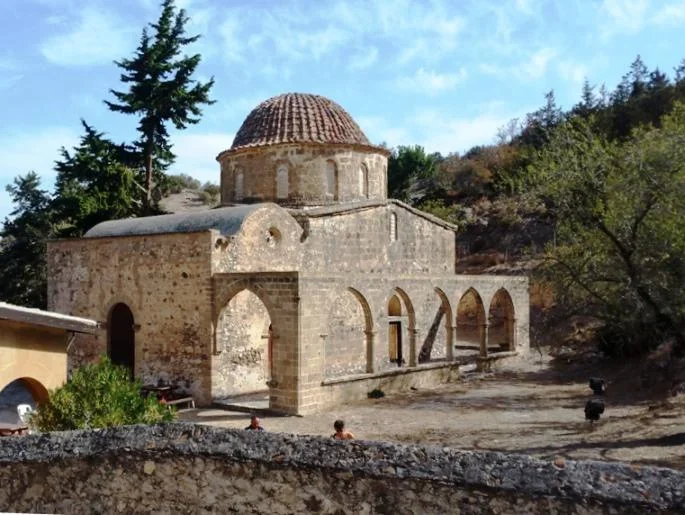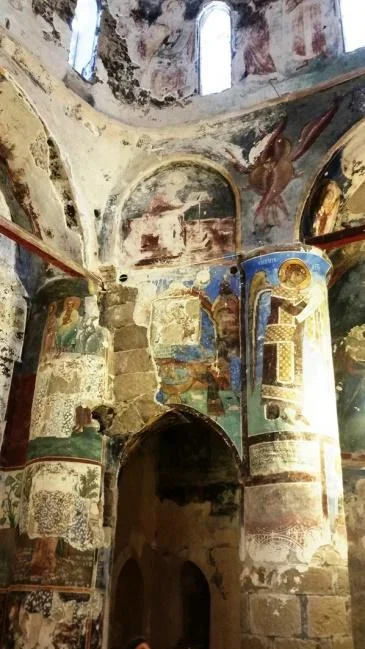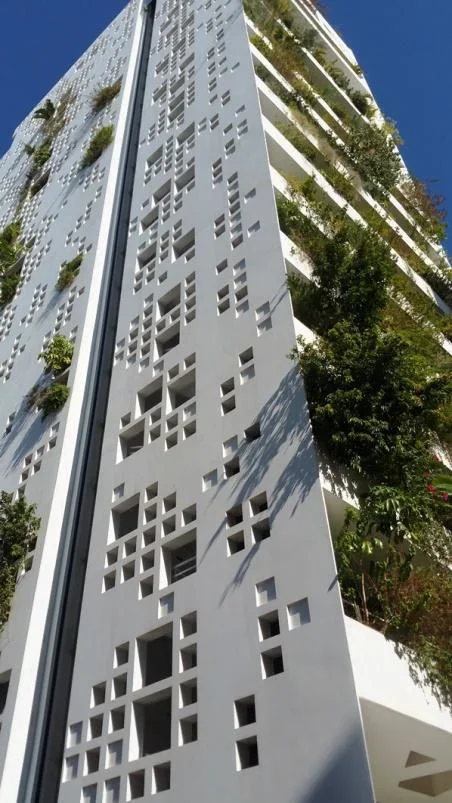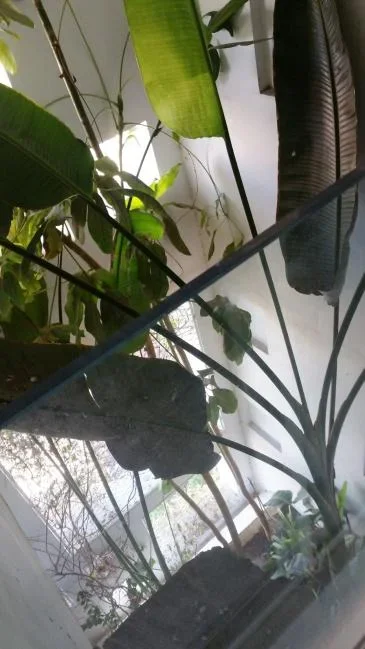Walk on air – Brighton’s new Vertical Promenade Pier
AIA UK is delighted to have supported a sold out lecture entitled “Walk on air – Brighton’s new Vertical Promenade Pier”. The joint AIA, RIBA, IStructE event took place on Tuesday the 18th of October 2016 at the RIBA’s Jarvis Auditorium. The focus of the talk was the recently completed British Airways i360 (BAi360) in Brighton, the world’s tallest moving observation tower. David Marks and Julia Barfield of Marks Barfield Architects and Dr John Roberts of Jacobs explained the thinking behind its concept, design, engineering and construction.
It is thought that this was only the second time Architects and Engineers have shared the platform at RIBA to talk jointly about a project. Julia Barfield referred to the collaboration as a “great example of the symbiotic relationship between Architecture and Engineering”. Building on the success of the London Eye, the BAi360 is an ambitious project which aims to offer a unique visitor experience. Standing at the foot of what used to be the West Pier, the tower is almost exactly half as high as the pier was long. Just as the original pier welcomed Victorian society to ‘walk on water’, the new attraction invites visitors to gain a different perspective on the city and ‘walk on air’. This is achieved with a state of the art glass pod which can accommodate up to 200 people. The pod ascends to a height of 138 metres, offering slowly unfolding 360-degree views over Brighton and Hove, the South Downs, the South Coast and the Channel. At the landward end of the pier, two existing Victorian cast iron tollbooths, designed by Eugenius Birch, were restored to their former glory.
The tower’s unprecedented slender ratio of 1:41 meant that Engineers had to push the boundaries of what is structurally possible, overcoming challenges such as wind forces and turbulence. The talk featured construction photos and videos from the steel manufacturing and the construction sequence. The tower was constructed from the ground by jacking-up the 17 steel cans, which make up the 162 m tower, one under the other starting from the top. This avoided work at height and was the safest way of building.
The entrepreneurial approach behind the development allowed Marks Barfield to ensure that the project gives back to the city with 1% of ticket sales going back into the local community in perpetuity.
The talk concluded with a Q&A session followed by drinks reception.
1.5 CES Credits were available for attending the talk.
Author: Yevgeniy Beylkin
AIA Continental Europe Conference - Girne, North Cyprus
AIA Continental Europe held its latest bi-annual conference in Girne, North Cyprus, from 29 Sep to 2 Oct 2016. Whereas this latest CE event generally followed the traditional conference format – a series of tours, seminars and lectures interspersed with lunches, dinners and networking opportunities – the Girne Conference also added a new, parallel event to the format, while North Cyprus lent its own particular flavour to the mix.
Student Charrette - The CE Chapter held its first Student Design Charrette during the Girne Conference at the nearby Girne American University. The students and faculty came locally from the American University, Cyprus International University and other invited schools of architecture in Spain, the Czech Republic and Hungary. Some of the students attending these universities came from even more diverse locations in the Middle East, Asia and Africa, insuring a multicultural atmosphere.
The 4-day Charrette focused on the adaptive reuse of the Old Bazaar in the centre of Girne. Selected conference attendees mentored the students over the 4 days, and all conference attendees were able to interact with them during evening sessions and the jury presentations. This allowed students and attendees alike to benefit from this alternative method of exploring Cypriot culture.
The Student Charrette was sponsored locally by the Girne American University, the Cyprus International University and Girne Municipality, with support from Graphisoft. As part of its mandate to promote education, additional financial support came from Laufen, which – along with the London Roca Gallery – also sponsors the UK Student Charrette held this October.
North Cyprus – Girne is a city with a long and fascinating history. Perhaps better known by its English name, Kyrenia, the Mediterranean harbour town has been home successively to ancient Egyptians, Hittites, Persians, Phoenicians, Greeks, Romans, Byzantines, Lusignans, Genevans, Venetians, Ottomans and most recently the British. It is certainly a good place to observe the effect of different cultures on the built environment over time; however, the current divide between the two halves of Cyprus also rendered a special poignancy to universal cultural identity issues.
Antiphonitis Monastary, part 12th , part 15th Century Byzantine Monastary, in the remote Karpaz Peninsula, North Cyprus
Since the civil strife and mass relocations of citizens in the 1970s, the island of Cyprus has been partitioned between the Turkish speaking populations in the north and the Greek speaking populations in the south. South Cyprus (the Republic of Cyprus) is predominately Greek Orthodox, and is part of the EU; however, North Cyprus (Turkish Republic of Northern Cyprus) is Muslim, and is recognised internationally only by Turkey.
Although there is positive talk of reconciliation and reunification, the current relationship with South Cyprus remains unresolved. In the context of the volatile eastern Mediterranean, peaceful North Cyprus has a vague feeling of remoteness, even isolation, but this can be misleading. As the welcome and participation of the local government and institutions in the conferenced demonstrated, the country is energetic, well-educated and keen to encourage visitors and cross communication. For whatever reason, the attendance at this year’s conference was a little less than for previous ones. Those that did not attend missed a compelling experience.
Seen positively, the smaller group gave an intimacy to the conference that was well appreciated. Most of the group stayed in one hotel – a large, well-run resort hotel complete with a Mediterranean beach, multiple pools, a casino, a conference centre, etc. – and were able to eat together, learn together, and chill out together while tightening bonds of friendship. Without a doubt, the feel good factor, nurtured by Turkish hospitality was high.
AIA UK Board Directors, Chris Musangi, AIA, and Lorraine King, AIA, relax in the Cyprus sunshine.
Two lectures on historical architecture familiarised the conference with local heritage. A panel of speakers from both sides of the divided city of Nicosia, spoke on the difficulties and challenges of town planning in a city split down its centre by a barricaded, international border - the Green Line - and called for reinforcement of their bi-communal, team work recommendations.
Local lecturers and guides were supplemented by Continental Europe AIA members speaking of their own experiences on universal topics such as adaptive reuse of buildings, sustainability, rural architecture and decay, acoustic environments, public spaces and floating bridges. As is customary with CE Conferences, two chapter sponsors – Graphisoft and Swiss Pearl – gave short talks. See HERE for full Conference programme and other details.
Conference tours were taken to see the Old Bazaar and historical harbour of Girne and the vernacular buildings in the nearby Karmi Village. In Nicosia, a walking tour explored architectural highlights in North Nicosia, before crossing the Green Line into South Nicosia, to experience the different architecture and atmosphere between the North and South sides of the city
Tower 25 / White Walls by Atelier Jean Nouvel, South Nicosia
Special reference should be made to the Conference Committee, including, Ali Yapicioglu, AIA, (Chair) and Bari Wetmore Salathe, AIA, with help from Sandra Zettersten, AIA. The Student Charrette Coordinator was Dr Balkiz Yapicioglu. All in all, the conference generated a grand total of 19.75 (+ 4 for Monday extension) CEUs along with many memories of good friends, brilliant weather and a brilliant programme.
Chapter Board Members Meet AIA President
While in London for meetings with the RIBA, National AIA President Russell Davidson, FAIA took the opportunity to meet with AIA UK board members. Bea Sennewald, Robert Rhodes, and Michael Lischer, all AIA UK past presidents and Fatos Peja, current AIA UK president elect met with Russell for a lunch meeting on the 3rd of October.
Russell described the AIA's efforts to raise the profile of the profession and make the AIA more inclusive. Efforts include launching programs for kindergarten through 12th grade students to introduce them to the profession and the importance of good design. This program is particularly appropriate for Russell as his 35 person New York practice specializes in education.
Another initiative currently being studied by the national board is to open the AIA's annual convention to the general public. The goal is to engage all those with an interest in architecture, including building owners, developers, contractors, users, and the public. This may require changes to the continuing education program and the design exposition.
The meeting with Russell was very informative and left us with the impression good things are happening at the AIA and the next few years promises to be very interesting for the AIA and its members.
By Michael Lischer FAIA
Construction payment charter updated – a missed opportunity?
The Government’s Construction Leadership Council has published an updated Construction Supply Chain Payment Charter to reflect commitments in the original charter. In our view much more could have been done to strengthen the updated charter; the onus remains very much on the industry to tackle the issue of late payment.
READ our article which details what's new and what impact the new charter will have.
By Will Buckby and Andrew Croft
King's Cross Gasholders Tour - 16 September 2016
On Friday the 9th of September 2016, AIA UK members and guests met at Argent's King's Cross redevelopment scheme to tour the Gasholder residential buildings. Designed by Wilkinson Eyre, the three building 145 unit apartment project is scheduled for completion early next year. The tour was led by Wilkinson Eyre's project architect, Jeff Lee. Tour attendees earned 1 continuing education learning unit for participation.
The Gasholder project is the "jewel in the crown" for developer Argent and provides the developments high end luxury residential offer. The estimated construction cost for the three buildings is circa £125m. This figure includes £16m for the restoration of four gasholder structures. Studio apartments start at £800,000 and prices rise to over £10m for a three bed penthouse.
The key feature and design driver of the project is the reuse of three 1867 grade II listed gasholders. Although not reconstructed in their original position, the gasholders really define the project's design. The design concept provides three drums of accommodation at differing heights to suggest the movement of the original gasholders, which would have risen up or down depending on the pressure of the gas within. A fourth gasholder structure is located at the centre of the gasholder structural frames and forms an open courtyard.
The building volumes are contained within each of the gasholder structural frames. This structural expression is further enhanced by a system of operable and static metal panels that can be used to control the environmental conditions inside the apartments. The dark steel cladding contrasts with other elements of brass and bronze.
Inside, the apartments are linked by a series of circular walkways around a central courtyard in each building. This brings natural light into the building's core and circulation corridors. Rooftop landscaping connects nature with the surrounding urban landscape.
The project presented real challenges for the design team, as everything was dictated by the gasholder structures. The result is a fantastic celebration of King's Cross' industrial heritage. Wilkinson Eyre's design has brought the gasholders back to a new life and Argent is to be commended for having the courage to undertake such a unique project!


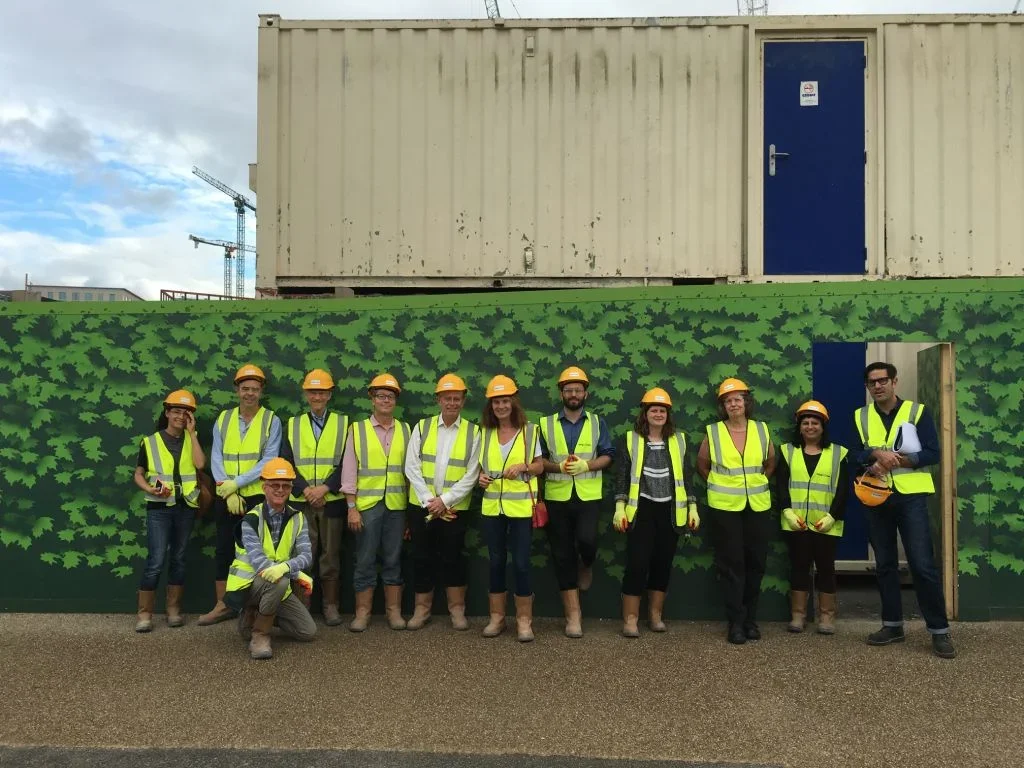

Article by Michael Lischer FAIA
AIA UK Membership Reaches 230
The AIA UK continues to grow and reached a new high of 230 members in August! The Board of Directors would like to welcome the following 30 people that joined so far in 2016. We look forward to seeing you all at an upcoming event!
- Keith Cady AIA
- Yi-han Cao AIA
- Samantha Cooke AIA
- Andrew Court Int'l Assoc, AIA
- Ozlem Tugba Ergen Int'l Assoc, AIA
- Carolina Filippini Int'l Assoc, AIA
- Paul Fincken Prof. Aff, AIA
- Saumya Ganguli AIA
- Karen Hassey AIA
- Kevin Hayes AIA
- Ashraf Ismail Int'l Assoc, AIA
- Eric Kirwan Prof. Aff, AIA
- Dragan Krstevski Assoc. AIA
- Benjamin Lee AIA
- Dong Min Lee Assoc. AIA
- Ting Li Assoc. AIA
- Patrick Magness AIA
- Wai Sem Morris Int'l Assoc, AIA
- Takeshi Obata AIA
- James O'Callaghan Prof. Aff, AIA
- Jose Marcos Silva Casimiro Palma AIA
- Sara Pearce Prof. Aff, AIA
- Nicole W. Portieri Int'l Assoc, AIA
- Anna Reiter Assoc. AIA
- Frederick Shands Assoc. AIA
- Lucy Swift Other
- Natalie Ward AIA
- Lulu Yang Assoc. AIA
- Madani Y. Zakri Int'l Assoc, AIA
- Thomas Zapoticzny AIA
By: M. Lischer FAIA




